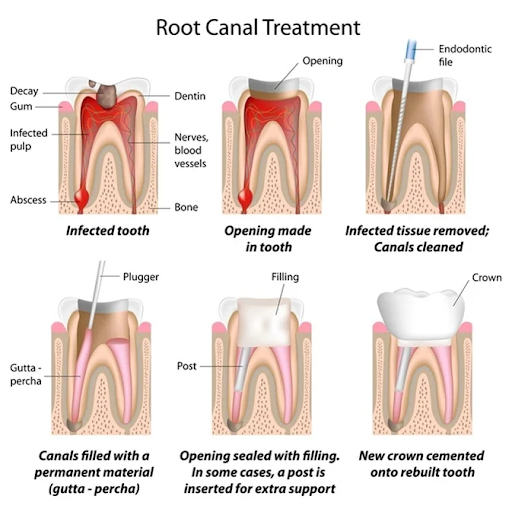Endodontics/Root Canal Treatment in Newark, CA

An endodontic treatment, also known as a root canal treatment, helps patients save their cracked, severely injured, or decayed teeth instead of removing them.
In case of not treating the infected tooth, the condition can become worse. It can cause severe pain or cause a tooth abscess, which is a pocket of pus around your tooth produced by a bacterial infection.
How Many Visits Are Required to Complete a Root Canal Treatment?
A root canal treatment requires one or two office visits. Sometimes completion of a root canal may require more visits depending on the presence of infection.
What is a Root Canal/Endodontics Therapy?
In root canal treatment, the dentist removes the diseased pulp as well as the nerve found within a tooth’s root canal. After that dentist clean and seal the pulp chamber to protect your natural teeth to avoid the need for dental bridges or implants. With the restoration process, you can ensure that the tooth will work normally and allow the restored tooth to last a lifetime, especially when you adopt good habits for your oral hygiene and healthy teeth.
When Do I Need to See a Doctor?
You may need a root canal treatment and visit a dentist if you have any of the following symptoms:
- Pain in the teeth or gums, prolonged sensitivity, discoloration
- Your tooth hurts or you get a feeling of tenderness when it is touched
- Tenderness or swelling in the lymph nodes under your jaw
- Drainage of pus in your mouth
- A tooth abscess
Sometimes, it becomes difficult to diagnose the signs of an endodontic problem. In this situation, X-rays can be performed to reveal the tooth damage and before giving the actual treatment.
What Happens During a Root Canal?
- A local anesthesia is given to the problematic tooth and surrounding area.
- Dentist opens the top of the tooth to eliminate the soft pulp and nerve before shaping the interior for filling.
- The next step is to clean, medicate, and fill the root canal with gutta percha (a rubber-like biocompatible material).
- A temporary filling is inserted until you get a permanent crown.

